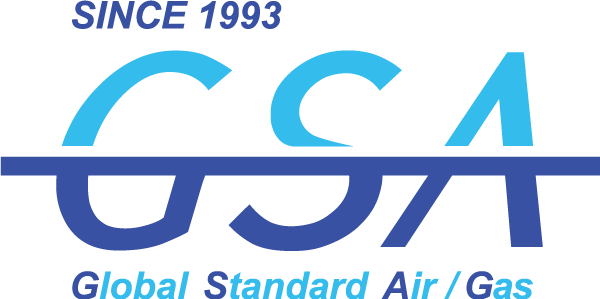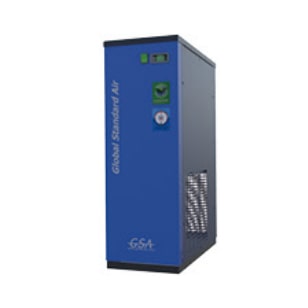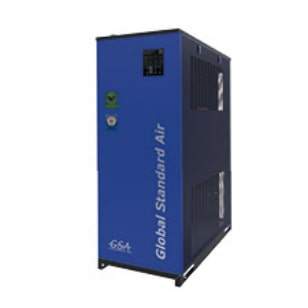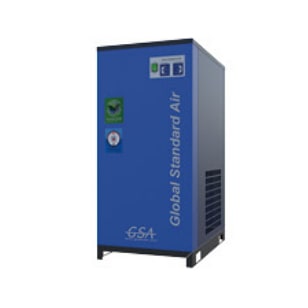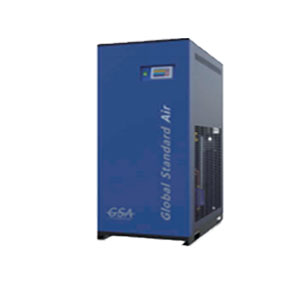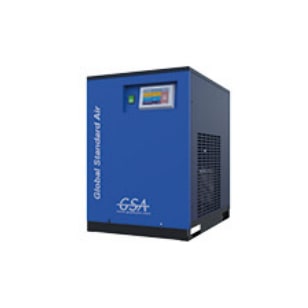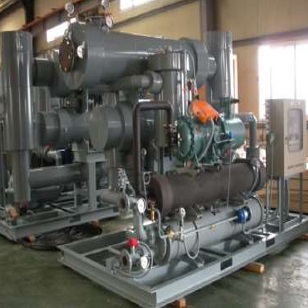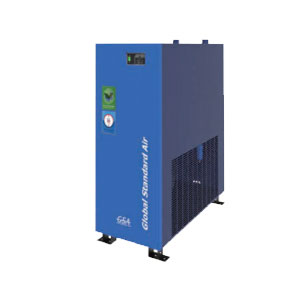GSA's compressed air treating equipment turning Top air quality
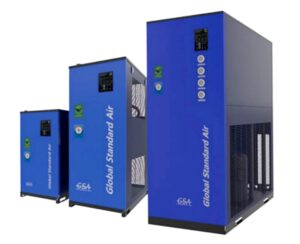
Compressed air dryers reduce the quantity of water vapor, liquid water, hydrocarbon, and hydrocarbon vapor in compressed air. Moisture in compressed air is harmful. Water damages a compressed air system several ways.
A refrigerated air dryer removes moisture from the compressed air through use of a heat exchanger. An air-to-refrigerant heat exchanger is used to cool the air so that the vapor condenses into water. This water is then collected and drained out of the system leaving only dry air. A refrigerated dryer typically has a dew point around 40°F
GSA's Non-Cycling Refrigerated Air Dryer is extremely reliable. The dryers adopting aluminum heat exchangers can be sized for any application, and will always provide consistent dew points. The units also have very low maintenance costs.
With world-top quality components, a sensing air dew point design and effective control systems, magnet/float combination drain trap, GSA air dryers offer proven reliability helping you avoid the operational costs and downtime caused by corrosion and damage from compressed air condensate.
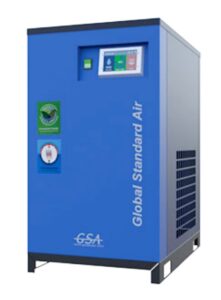
Non-cycling refrigerated dryers operate the refrigeration compressor continuously once the unit is powered on, regardless of demand. Cycling or thermal mass dryers are considered as an energy saving type because they store cold energy and use it on an as needed basis.
The cycling dryer works by using the refrigeration system to cool Phase Change Material (PCM). Heat is exchanged between the thermal mass and the warm air entering the system, cooling the air and warming the thermal mass.
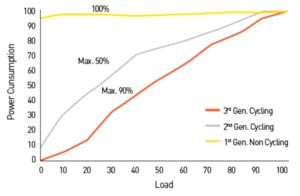
Once the temperature of the thermal mass rises above a certain point, the system turns on. The system turns off when the desired low temperature is achieved. Non-cycling refrigerated dryers are designed to run continuously. So, it makes no difference if a facility is open or closed a non-cycling dryer will operate regardless.
On the other hand, cycling dryers turn on and off based on demand, making them much more energy efficient. For example, a 5000 scfm non-cycling refrigerated dryer running continuously for 10,000 hours at an average energy cost of $1.00 per hour,
would cost $10,000 annually in energy expenses alone. In the same scenario, a GSA cycling dryer, running at 20% load, would cost $2,000 annually and $8,000 savings compared to the cost of operating a non-cycling dryer.
Refrigerated Air Dryers
HYD-N3 series, HYD-N2 series, HYD-N series, HYD-N series, HYD-WN series, HYD-HTN series, HYD-HTNS series, HYD-HT series
